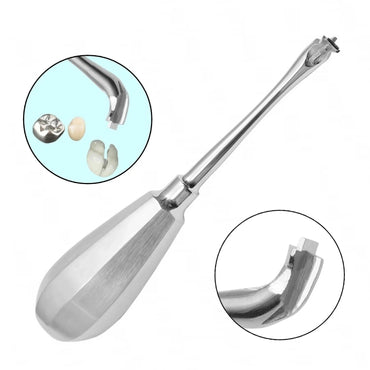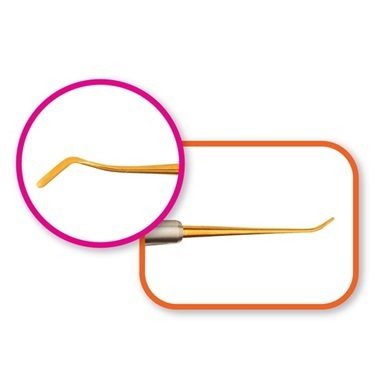In the business world, the pursuit of growth is often seen as the ultimate goal. Whether you’re running a small startup or managing a well-established dental practice, the idea of getting bigger—scaling operations, increasing revenue, expanding your customer base—is likely on your radar. But while many businesses focus primarily on growth in size, they often overlook the essential principle that getting bigger requires getting better first.
Growth without improvement is like building a house on a shaky foundation. Sure, you can add more rooms (or customers, products, and services), but without strengthening your underlying systems, processes, and culture, your business will eventually crack under pressure. This blog explores the critical concept of “If you want to get bigger, get better” and how focusing on continuous improvement leads to sustainable business growth.
1. Focusing on Quality Over Quantity
Many businesses make the mistake of pursuing growth at all costs. They may take on more clients than they can handle, overextend their resources, or introduce new products without fully refining their existing ones. In doing so, they often sacrifice quality in favor of quantity.
However, long-term success depends on the quality of what you offer—be it products, services, or customer experiences. Growing bigger without improving the quality of what you deliver can lead to dissatisfied customers, negative reviews, and ultimately, business failure.
What to Do:
- Enhance Your Offerings: Before expanding, focus on perfecting your current products or services. Gather customer feedback, identify areas of improvement, and invest in enhancing what you already provide.
- Refine Your Processes: Look at your internal processes and ask, “Can this be done better?” By streamlining operations, you’ll be able to handle future growth more effectively.
2. Building a Strong Team
A business is only as strong as the people behind it. If you want to grow your business, you need a team that is not only capable but also adaptable, motivated, and aligned with your business vision.
Many companies expand quickly but fail to invest in their workforce. As a result, they may struggle with high turnover, lack of leadership, and inconsistent performance. Instead, a focus on building a strong team—through leadership development, training, and employee engagement—creates a solid foundation for growth.
What to Do:
- Hire for Cultural Fit: As you grow, ensure new hires align with your company values and long-term vision. It’s easier to train someone in skills than to change their mindset.
- Develop Leadership: Leadership drives growth. Provide leadership training and mentorship programs to cultivate strong leaders who can guide the team as the business expands.
- Invest in Training: Equip your team with the skills they need to succeed. This not only improves performance but also encourages employees to grow alongside the business.
3. Improving Customer Experience
If you want to get bigger, start by getting better at serving your current customers. The customer experience is one of the most critical aspects of business growth. Satisfied customers are more likely to return, refer others, and leave positive reviews. On the other hand, neglecting customer satisfaction can damage your reputation and slow growth.
Too often, businesses focus on acquiring new customers while overlooking the needs of their existing ones. But the most effective growth strategy is one that focuses on both customer retention and acquisition.
What to Do:
- Listen to Customer Feedback: Regularly ask for feedback from your customers and use it to improve your services. Address complaints promptly and show customers you value their input.
- Personalize the Experience: Treat each customer as an individual by offering personalized service. This not only strengthens relationships but also differentiates you from competitors.
- Implement a Loyalty Program: Encourage repeat business by rewarding loyal customers with special offers, discounts, or early access to new products and services.
4. Streamlining Operations
Inefficiencies are one of the biggest barriers to sustainable growth. As a business grows, operational processes often become more complex, which can lead to bottlenecks, errors, and wasted resources. If you want to scale successfully, you must first streamline your operations to ensure they can handle increased demand without breaking down.
Streamlining operations means improving your workflow, automating repetitive tasks, and eliminating unnecessary steps. Doing so not only improves efficiency but also frees up resources that can be used to fuel further growth.
What to Do:
- Automate Where Possible: Identify repetitive tasks that can be automated to save time and reduce human error. Whether it’s automating appointment scheduling in a dental practice or using software to manage inventory, automation can dramatically improve efficiency.
- Review and Refine Workflows: Conduct regular audits of your workflows and processes to identify areas of improvement. Small tweaks, such as reducing steps in a process or implementing new tools, can make a big difference.
- Use Data to Drive Decisions: Invest in data analytics to track performance, identify inefficiencies, and guide decision-making. The more data-driven your business becomes, the easier it is to streamline operations and make informed growth decisions.
5. Focusing on Continuous Improvement
Growth isn’t a one-time event. It’s a process that requires continuous improvement in all aspects of the business. Companies that succeed in scaling are those that embrace a culture of continuous learning and development, constantly seeking new ways to improve their products, services, and operations.
Whether it’s refining internal processes, staying ahead of industry trends, or continually investing in employee development, continuous improvement is the key to long-term growth.
What to Do:
- Create a Culture of Learning: Encourage your team to seek out new skills, attend workshops, and stay updated on industry trends. A culture of learning helps ensure your business is always evolving and improving.
- Set Regular Goals for Improvement: Don’t just set growth goals—set improvement goals. For example, aim to improve customer satisfaction by 10% or reduce processing time by 15% over the next quarter. These types of goals keep your business focused on getting better, which will naturally lead to growth.
- Review and Adapt: Regularly review your business processes, goals, and performance. Be flexible and willing to adapt as you grow. Sometimes, getting better means being willing to pivot when necessary.
6. Strengthening Your Brand
Your brand is more than just a logo or slogan—it’s the identity and reputation your business holds in the eyes of customers, employees, and the marketplace. As your business grows, your brand needs to grow with it. This doesn’t just mean increasing brand awareness but strengthening your brand by staying true to your values and delivering consistent quality.
A strong brand creates loyalty, drives word-of-mouth marketing, and attracts new customers. If you want to get bigger, focus on building a brand that people trust and remember.
What to Do:
- Consistency is Key: Ensure that your brand’s message, values, and tone are consistent across all touchpoints, from your website and social media to in-person interactions.
- Deliver on Your Brand Promise: Make sure that your customer experience aligns with the promises your brand makes. If your brand is built around providing superior service, ensure every interaction delivers on that promise.
- Engage with Your Audience: Regularly engage with your customers through social media, email marketing, and community events. The more engaged your audience is with your brand, the more likely they are to become loyal advocates.
7. Measuring Success Through Data
In today’s competitive landscape, businesses need to measure performance to ensure they’re improving. Data-driven decision-making allows you to understand what’s working, what isn’t, and where to focus your efforts for growth.
By tracking key performance indicators (KPIs) such as customer satisfaction, employee productivity, and financial metrics, you can make informed decisions about how to scale your business effectively.
What to Do:
- Set KPIs: Define the key metrics that are most important to your business’s success. These can include customer acquisition costs, retention rates, and profitability.
- Invest in Analytics: Use data analytics tools to monitor performance regularly and identify trends. Data should be the driving force behind every major decision you make.
- Adjust Your Strategy: Be willing to adapt your growth strategy based on the data. If a particular approach isn’t yielding the expected results, adjust your tactics accordingly.
Getting bigger should never be your sole focus. Sustainable growth is a byproduct of continuously improving your business in every aspect—whether it’s product quality, customer experience, team dynamics, or operational efficiency. By adopting the mindset that growth comes from getting better, you’ll not only expand your business but do so in a way that is sustainable, scalable, and built to last.
In the long run, businesses that prioritize improvement over expansion are those that not only survive but thrive. So, if you want to get bigger, start by getting better—your customers, employees, and bottom line will thank you.



























